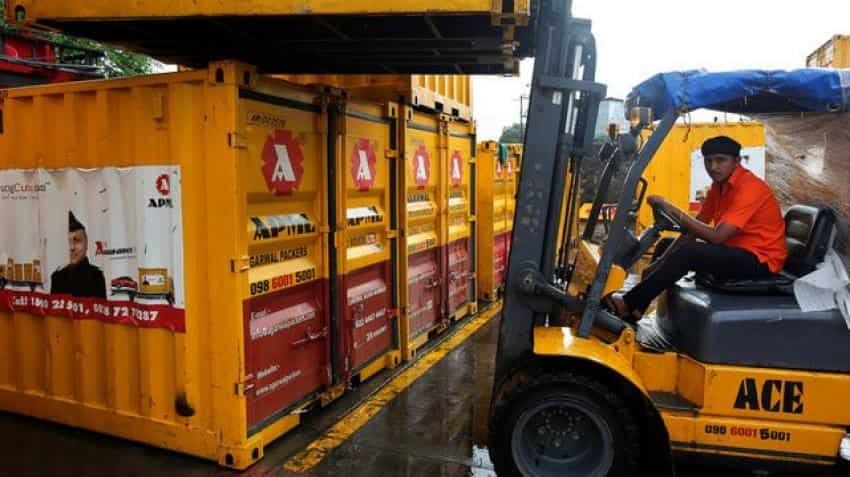Fast forward; GST set to transform face of Indian logistics industry

India`s greatest tax reform - replacing an array of provincial duties with a nationwide goods and services tax - is transforming the logistics industry in a country where moving stuff around is notoriously difficult to do, executives say. The advent of organised retail and e-commerce began modernising warehouses in India a decade ago, but most firms still rely on musty, dilapidated "godowns", as storehouses are known colloquially.
The unified tax system is expected to bring change on a far grander scale, removing distortions created by differential taxes and duty structures imposed across India`s 29 states and 7 union territories.
"When we moved from one state to the other, it felt like moving from one country to another," said Ramesh Agarwal, chairman of New Delhi-based Agarwal Packers and Movers.
From July 1, the new Goods and Services Tax, or GST, introduced by Prime Minister Narendra Modi`s government, will change all that, with the biggest tax reform seen since India won independence from British colonial rule 70 years ago.
Companies that have previously based storage models on tax efficiency can move to the much more cost efficient, demand-based hub-and-spoke model used globally.
Anticipating the change, Agarwal`s firm, for example, has carved India into five regions and is setting up one massive warehouse in each. "There`s no tax arbitrage to be gained. So decisions on manufacturing, warehousing and selling will be purely driven by the real costs of manufacturing and going to market, that is the single biggest advantage of GST," said R Subramanian, Managing Director at DHL Express in Mumbai.
Subramanian still anticipates bureaucratic headaches, notably from GST`s e-way bill system, requiring vehicle details from pickup to delivery, which he reckons would generate 90 million entries daily for the express delivery sector alone.
But, the reform, along with the gradual shift in India’s service dominated economy toward more manufacturing, has paved the way for ultra-modern storage sites with automated conveyers, RFID-enabled tracking and IT-enabled warehousing management systems. The potential growth, and investment needed for modernisation has spurred a slew of deals between Indian firms and major global private equity players and pension funds.
In the last two years alone, as Modi made GST a priority, these investors have put $1.5 billion in the warehousing business.
"GST is not only a tax reform, it is also a business reform as a whole, and a lot of businesses are now restructuring their supply chains," said Rohit Jain, a partner with Economic Laws Practice in Mumbai.
REPLACING `GODOWNS`
Canada Pension Plan Investment Board last month committed to spend $500 million in a joint venture with India`s IndoSpace. Other foreign firms putting money in the sector include Carlyle Group
JSW Steel
Reliance Retail, the retail unit of Reliance Industries
Mahindra Logistics is exploring an initial public offering, or a sale to a foreign partner, while rival Future Supply Chain Solutions is looking to do likewise, according to media reports.
With 45 percent of India`s gross domestic product concentrated around seven major cities, Arif A Siddiqui at Coign Consulting, specialising in supply chain management, expected investment in warehousing to focus on Ahmedabad, Bengaluru, Chennai, Hyderabad, Kolkata, Mumbai, and New Delhi. Singapore-based logistics company Ascendas-Singbridge has just signed a $600 million deal with Firstspace Realty, based in the south Indian city of Bengaluru, to create 14 million square feet (1.3 million square meters) of industrial warehousing space across six major Indian cities.
"Manufacturing, modern retail and the pharma sector were already driving change in Indian warehousing. GST has just fast-tracked the growth rate in logistics," said Aloke Bhuniya, Chief Executive of Ascendas-Firstspace.
He reckoned that GST has boosted the industry`s annual growth rate from 12-15 percent to 20-22 percent, and saw plenty of room for a lot more modernisation.
Out of the logistics industry`s 980 million square feet (91 million square meters) of captive, agri-based and cold storage warehousing, Bhuniya estimated 85 percent were old godowns and traditional structures.
"This represents a huge opportunity for modern warehousing to tap into," he said.
Get Latest Business News, Stock Market Updates and Videos; Check your tax outgo through Income Tax Calculator and save money through our Personal Finance coverage. Check Business Breaking News Live on Zee Business Twitter and Facebook. Subscribe on YouTube.
09:25 AM IST











 States not in favour of bringing ATF under GST, says finance minister
States not in favour of bringing ATF under GST, says finance minister 55th GST Council Meeting: No GST payable on penal charges levied & collected by banks & NBFCs from borrowers for non-compliance, says Nirmala Sitharaman
55th GST Council Meeting: No GST payable on penal charges levied & collected by banks & NBFCs from borrowers for non-compliance, says Nirmala Sitharaman  GST Council Meeting: Packaged & labelled popcorn with added sugar to attract 18% rate, decision on insurance products deferred
GST Council Meeting: Packaged & labelled popcorn with added sugar to attract 18% rate, decision on insurance products deferred  55th GST Council Meeting: Jet fuel inclusion, lower taxes on insurance policies to be considered
55th GST Council Meeting: Jet fuel inclusion, lower taxes on insurance policies to be considered GoM on GST rate rationalisation yet to submit report, GST Council to take final decision: CBIC
GoM on GST rate rationalisation yet to submit report, GST Council to take final decision: CBIC